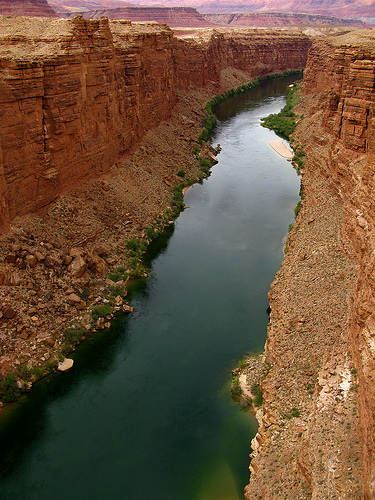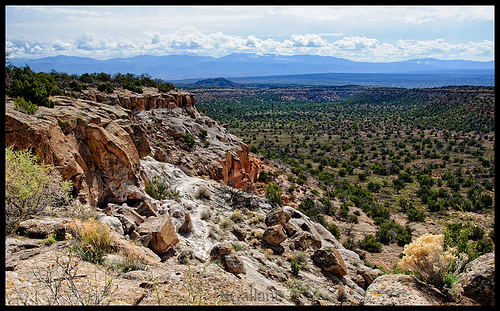By Katrina Marland
In the Colorado River Basin, water is in short supply. Millions of people rely on the Colorado River for domestic water, agricultural irrigation and even electricity. Take the products produced by the agricultural fields fed by the Colorado, factor in where all of them are shipped and consumed and you’d be hard pressed to find many areas in the U.S. that aren’t in some way dependent on the Colorado River.
Recently, this important waterway has been subjected to a number of problems. The whitebark pines that shade its northern snowpack are declining; recent wildfires are interfering with water quality and temperature; and development is diverting the water for a variety of purposes. (For a sobering documentary on the Colorado River, check out Peter McBride’s Chasing Water.)
This is why recent findings in the arid Southwest are particularly troubling. A large-scale study of ecosystems in the American Southwest — supported by scientists from Oregon State University, the Conservation Biology Institute and NASA — has found that the death of millions of acres of trees could have an immense impact on the local ecosystems throughout the region, including the Colorado River itself.
It is a fairly well understood fact that trees need water to live. What we often forget — and what many never learn in the first place — is that to flow properly, water also needs trees. Even a river in dry, rocky, nearly barren land (say, the Southwest) is depending on trees to keep it flowing. Trees along riverbanks stabilize the soil, preventing erosion into the water, which keeps the water cleaner and the river flowing at its current level. The trees also filter out pollutants, regulate the water temperature (which aquatic creatures, like fish, appreciate) and provide additional oxygen. But even trees that don’t border a river can ensure its steady flow. Trees shade snowpack from the glaring sun and prevent it from melting too quickly. This allows the snow to melt at a steadier rate over a longer period of time, which can keep water flowing into rivers long through the summer months — even when rain is scarce.
In the Southwest, two particularly hardy trees — pinyon pine and juniper — act as the framework for an ecosystem that has adapted to survive on small amounts of water. Winds in this region can be harsh and kick up a great deal of dust and soil, but pinyon pines and junipers literally hold the dry, dusty land together. They also protect the water supply by shading the seasonal snowpack and prevented sun-warmed dust from blowing onto the snow and causing it to melt. And, don’t forget the wildlife — they provide food and habitat for a variety of species.
Yet, over the past 15 years, more than 2.5 million acres of these trees across the Southwest have fallen victim to a combination of severe drought and mountain pine beetle infestations, leaving the landscape open to what scientists fear could quickly become extreme deterioration. Without the pines and juniper, this windy, arid region could become severely eroded, and the ecosystem’s ability to protect or add to the water supply could disappear. With millions relying on the water it provides, we can’t afford to underestimate the value of trees to this river that acts as a lifeline to the entire Southwest.

